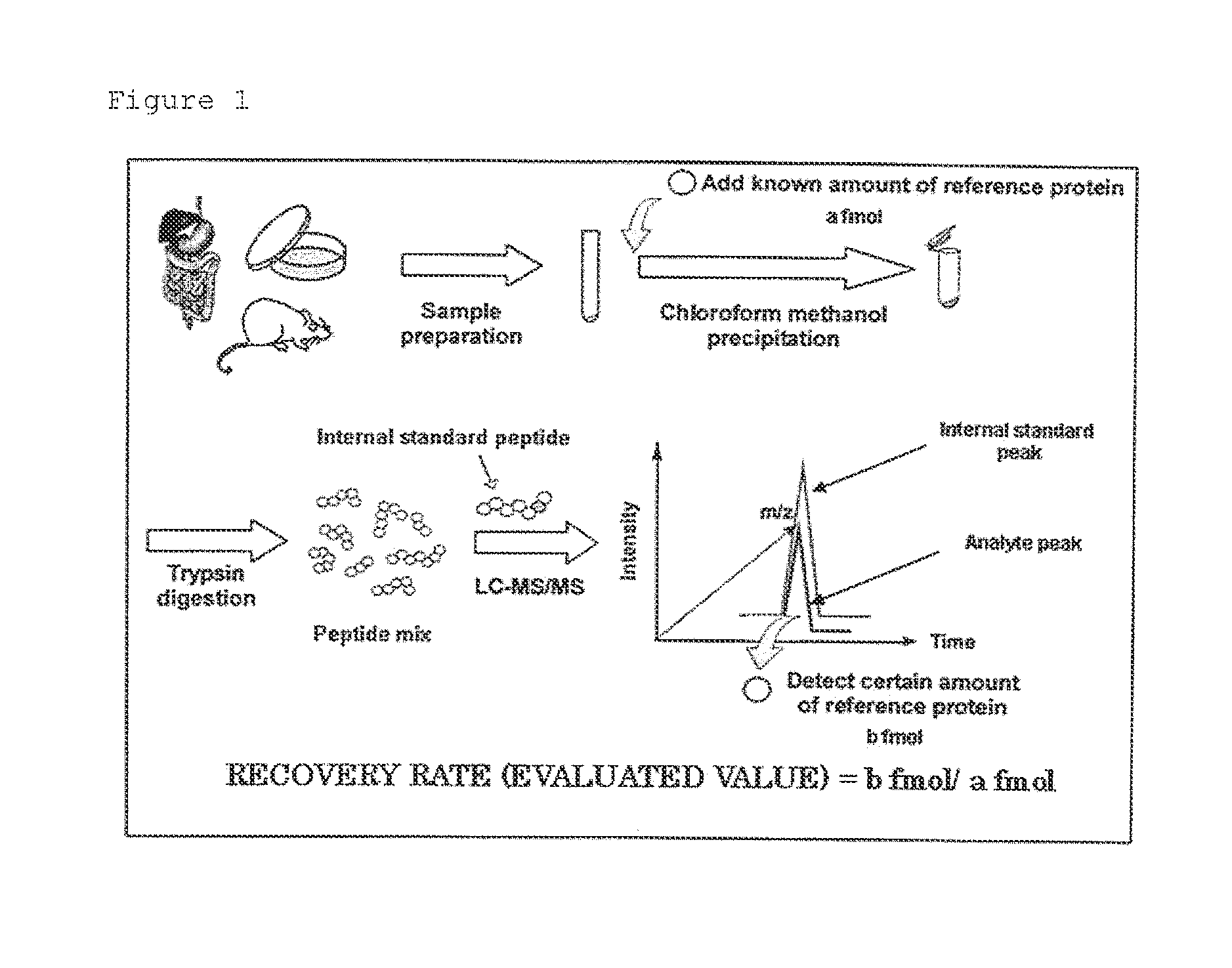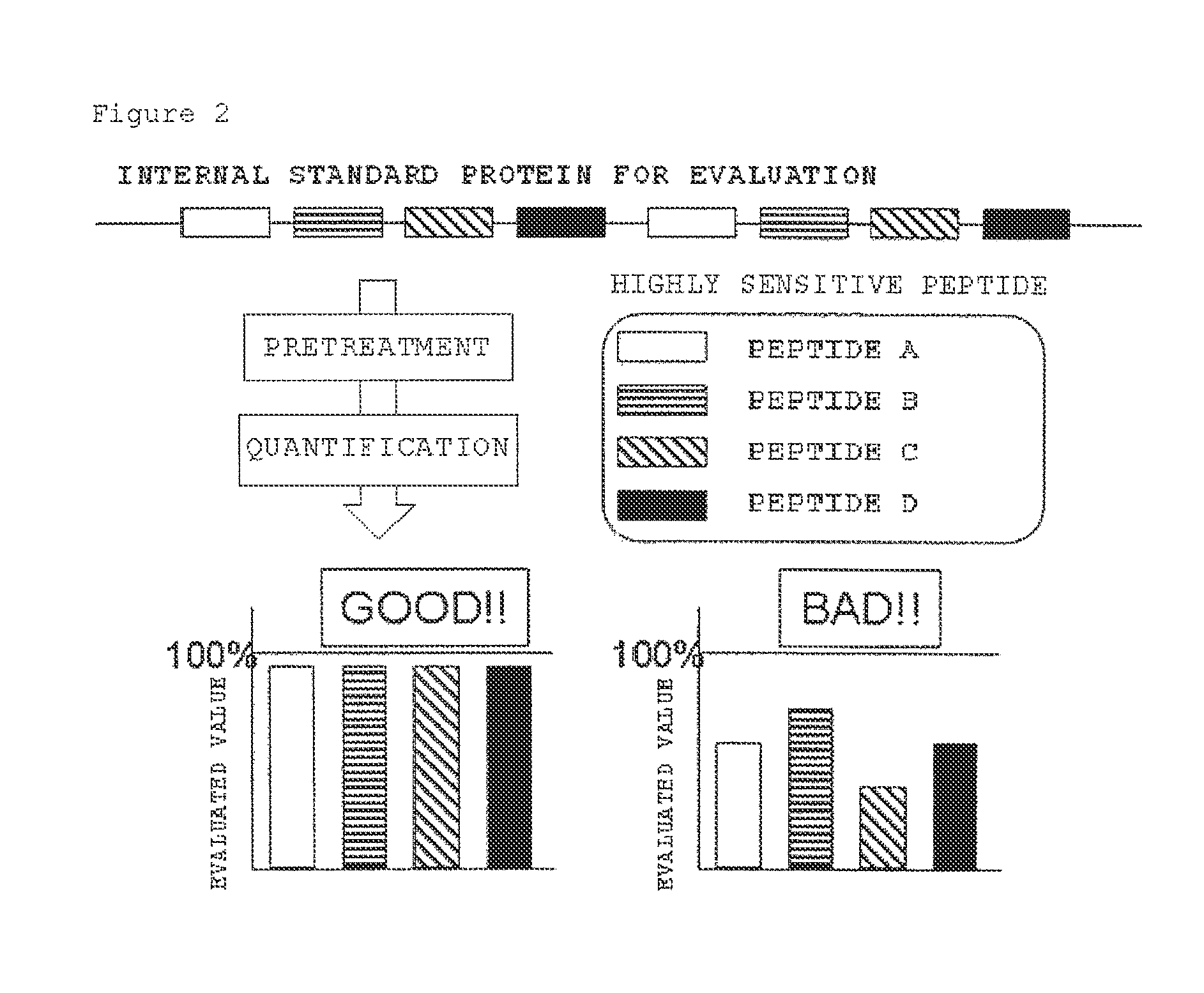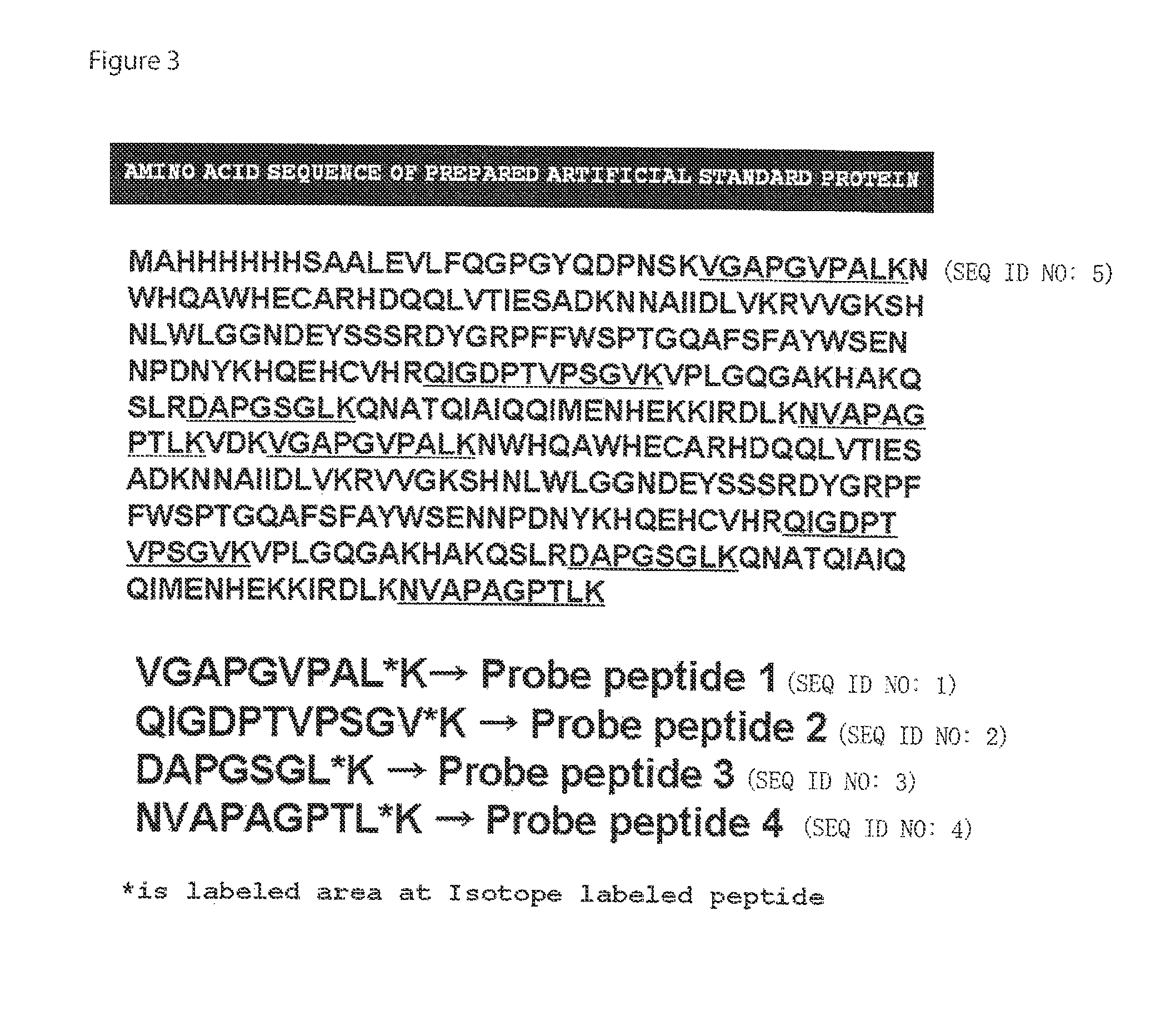Evaluation peptide for use in quantification of protein using mass spectrometer, artificial standard protein, and method for quantifying protein
a peptide and protein technology, applied in the direction of peptide/protein ingredients, instruments, separation processes, etc., can solve the problems of affecting the quantitative value, overestimating the pretreatment efficiency, and not being suitable for exhaustive separation, etc., to achieve complete digestion, high general versatility, and sufficient sensitivity
- Summary
- Abstract
- Description
- Claims
- Application Information
AI Technical Summary
Benefits of technology
Problems solved by technology
Method used
Image
Examples
example 1
Preparation of Artificial Standard Protein Comprising Evaluation Peptide and Confirmation of Sensitivity of Evaluation Peptide
[0078]VGAPGVPALK (SEQ ID NO: 1), QIGDPTVPSGVK (SEQ ID NO: 2), DAPGSGLK (SEQ ID NO: 3), and NVAPAGPTLK (SEQ ID NO: 4) were selected as evaluation peptides, and an artificial standard protein (SEQ ID NO: 5) containing 2 each of these types of peptides was prepared (see FIG. 3). The artificial standard protein was prepared according to the following method.
[0079]1. IPTG Induction
[0080]Escherichia coli (BL21-CodonPlus (DE3)-RIPL) transformed with a pET-vector having artificial standard protein cDNA inserted was shake cultured overnight in a LB medium containing 30 mg / L of kanamycin and 50 mg / L of chloramphenicol, diluted in the LB medium, and cultured until OD600 reaches a value of around 0.4. IPTG at a final concentration of 100 mM was added thereto, which was further incubated for 3 hours to induce the expression of the protein. The E. coli after inducing the e...
example 2
Evaluation 1 of Pretreatment Efficiency Using Evaluation Peptide
[0091]The pretreatment efficiency in the quantification of a protein was evaluated using the artificial standard protein of Example 1. A sample for evaluation was prepared and evaluated by the following method. The sample for evaluation was handled by a person not familiarized with the experimental procedure.
[0092]1. Preparation of Peptide Sample
[0093]10,000 fmol of an artificial standard protein and 2,200 fmol of E. coli-derived Triose Phosphate Isomerase (TPI) as a reference example were added to 50 μg of a kidney plasma membrane sample isolated from mice. Then, the mixture was denatured using a 7 M guanidine hydrochloride solution (dissolved in 0.1 M Tris-HCl, 10 mM EDTA pH 8.5) and subjected to reduction treatment with DTT and carbamide methylation treatment with iodoacetamide to protect the SH group of a cysteine residue. Subsequently, the resultant was desalted and concentrated by a methanol-chloroform precipitati...
example 3
Evaluation 2 of Pretreatment Efficiency Using Evaluation Peptide
[0099]The pretreatment efficiency was evaluated in the same way as in Example 2. However, the sample for evaluation was handled by a person familiarized with the experimental procedure. The addition amount of the artificial standard protein was 250 fmol, and the addition amount of E. coli-derived Triose Phosphate Isomerase (TPI) was 700 fmol.
[0100]The results are shown in FIG. 6. As shown in FIG. 6, the evaluated values of the evaluation peptides were 90 to 97% and therefore less variable, and all of the values were high. The recovery rate of TPI as a control for the pretreatment was 99%, and the protein in this experiment for which the evaluation peptides had high evaluated values was determined to have been suitably pretreated. In FIG. 6 in which the evaluated values were high, TPI had a high recovery rate compared to that in FIG. 5 in which the evaluated values were low (FIG. 6: 99%, FIG. 5: 84%), and a correlation w...
PUM
| Property | Measurement | Unit |
|---|---|---|
| temperature | aaaaa | aaaaa |
| pH | aaaaa | aaaaa |
| mass spectrometer | aaaaa | aaaaa |
Abstract
Description
Claims
Application Information
 Login to View More
Login to View More - R&D
- Intellectual Property
- Life Sciences
- Materials
- Tech Scout
- Unparalleled Data Quality
- Higher Quality Content
- 60% Fewer Hallucinations
Browse by: Latest US Patents, China's latest patents, Technical Efficacy Thesaurus, Application Domain, Technology Topic, Popular Technical Reports.
© 2025 PatSnap. All rights reserved.Legal|Privacy policy|Modern Slavery Act Transparency Statement|Sitemap|About US| Contact US: help@patsnap.com



